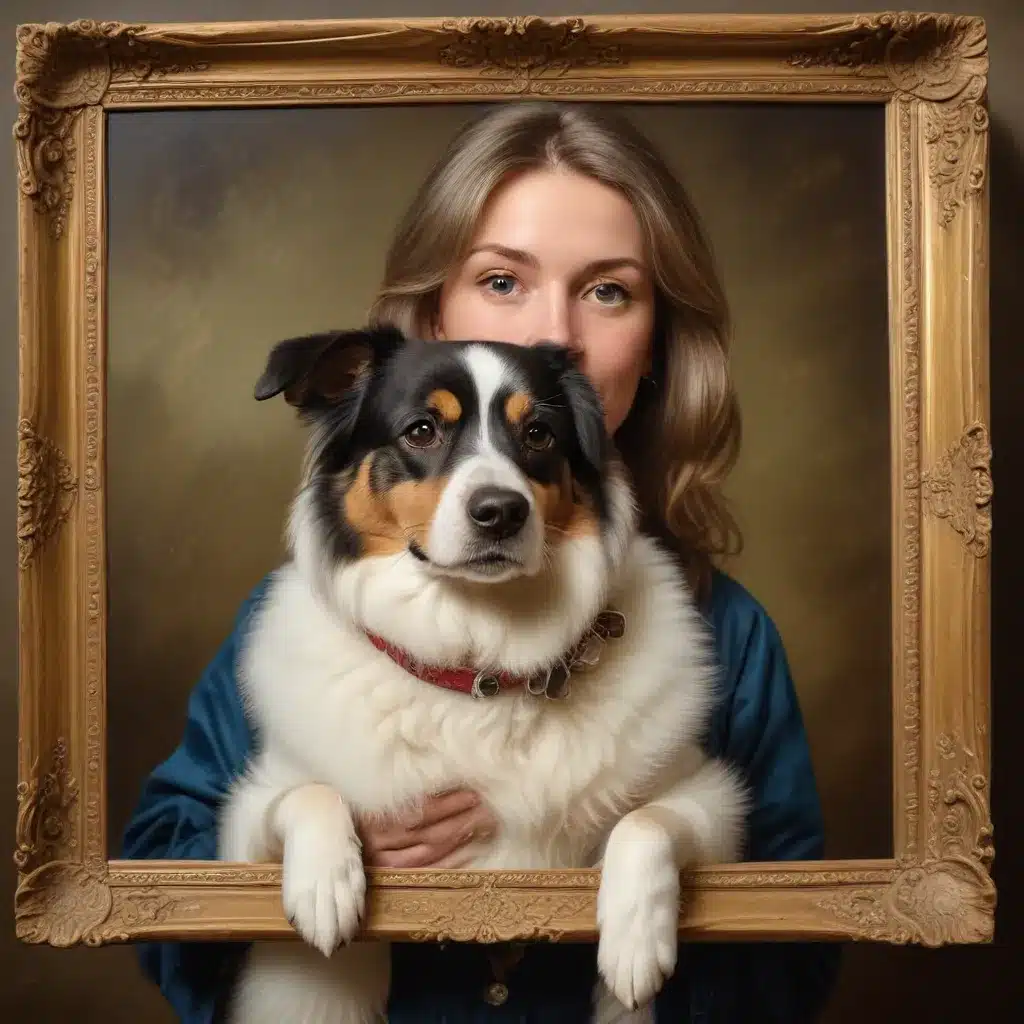
As an art instructor on Pencil & Paint Muse, I’m often asked about the best ways to preserve and maintain cherished pet portraits. Whether a treasured family heirloom or a recently commissioned masterpiece, these beloved artworks deserve the utmost care and attention. In this comprehensive guide, we’ll explore the techniques, methods, and considerations involved in preserving the artistic integrity and historical value of prized pet portraits.
Portrait Preservation Techniques
One of the most crucial aspects of caring for pet portraits is understanding the materials and techniques used by the artist. This knowledge can inform the appropriate preservation strategies. For example, an oil painting may require different handling and storage considerations compared to a pastel or watercolor piece.
When it comes to protecting the surface, proper framing and matting are essential. Archival-quality materials like acid-free mats and UV-filtering glass or acrylic can help shield the artwork from environmental factors that can cause discoloration, fading, or degradation over time. Additionally, maintaining a stable temperature and humidity level in the display environment is crucial for preserving the integrity of the artwork.
Proper Storage and Display
For pet portraits not currently on display, proper storage is key. Flat file cabinets or archival-grade portfolio cases can provide an ideal environment, protecting the artwork from dust, light exposure, and physical damage. When transporting the piece, use sturdy, well-padded containers to minimize the risk of creasing, tearing, or cracking.
When it comes to displaying your prized pet portrait, consider the placement carefully. Avoid direct sunlight, which can lead to fading and color shifts over time. Instead, opt for indirect, diffused lighting that mimics natural daylight. Rotate the artwork’s orientation periodically to ensure even exposure and prevent uneven aging or discoloration.
Restoration Considerations
Despite our best efforts, pet portraits may occasionally require professional restoration services. Consulting with a qualified art conservator is crucial in assessing the artwork’s condition and determining the appropriate course of action. They can provide guidance on treatments such as surface cleaning, varnish removal, retouching, or structural stabilization.
It’s important to remember that restoration should be approached with the utmost care and respect for the artwork’s historical and artistic integrity. Authentic provenance and documentation should be maintained, and any interventions should be reversible to the greatest extent possible.
Preventative Maintenance
Proper preventative maintenance is the foundation of preserving your prized pet portraits. This includes regularly monitoring the artwork’s environment, handling it with care, and implementing appropriate storage and display strategies.
Environmental Control
Maintaining a stable temperature, humidity, and light level in the artwork’s environment is essential. Sudden fluctuations or exposure to extreme conditions can cause dimensional changes, delamination, or accelerated aging of the materials. Invest in hygrometers and thermometers** to monitor these critical factors, and make adjustments as needed.
Handling and Transport
When interacting with your pet portrait, always use clean, cotton gloves to avoid transferring oils or fingerprints to the surface. Avoid touching the artwork directly, and support the entire piece when moving it. If transportation is necessary, use sturdy, well-padded containers to protect the artwork from impacts and vibrations.
Damage Assessment and Repair
Despite our best efforts, pet portraits may occasionally sustain damage or deterioration over time. Regularly inspecting the artwork for signs of cracking, flaking, discoloration, or deformation can help identify issues early on.
Identifying Conservation Needs
If you notice any concerning changes, it’s crucial to consult with a professional art conservator. They can provide a detailed assessment of the artwork’s condition and recommend the appropriate conservation treatments. Attempting DIY repairs or using improper materials can further compromise the integrity of the piece.
Professional Intervention
In cases where professional restoration is required, work closely with the conservator to understand the proposed treatments and their potential impact on the artwork. Maintain open communication throughout the process, and request documentation of any interventions performed. This will help ensure the long-term preservation of your prized pet portrait.
Artistic and Historical Value
Pet portraits are not merely decorative objects; they often hold significant artistic, cultural, and emotional value. Understanding and preserving these aspects is crucial for ensuring the enduring legacy of these beloved artworks.
Cultural Significance
Pet portraits can serve as important historical and cultural documents, reflecting the customs, values, and attitudes of the time period in which they were created. By preserving these artworks, we can gain valuable insights into the social and artistic contexts that shaped their creation.
Artistic Merit
Many pet portraits are the result of skilled artistic expression, showcasing the technical mastery and creative vision of the artist. Preserving these works allows us to appreciate the artistic legacy and the unique perspectives they offer, inspiring future generations of artists and art enthusiasts.
Emotional Resonance
For many pet owners, a cherished pet portrait holds deep emotional significance, capturing the special bond between human and animal. Preserving these artworks ensures that the memories, affection, and joy they represent can be passed down through the generations, fostering a continuous connection to our beloved companions.
Practical Considerations
Caring for prized pet portraits involves more than just technical preservation techniques; it also requires thoughtful planning and ethical decision-making.
Budgeting and Funding
Proper preservation and conservation can be a significant financial investment. Exploring avenues such as grants, sponsorships, or connecting with private collectors can help offset the costs and ensure the long-term care of these artistic treasures.
Ethical Practices
When it comes to pet portraits, it’s essential to uphold principles of authenticity and provenance. Maintaining accurate documentation, respecting the artist’s intentions, and ensuring equitable access to these artworks are crucial considerations in the preservation process.
By embracing these principles and employing the appropriate techniques, we can ensure that the prized pet portraits we cherish today will continue to inspire and delight future generations. As caretakers of these artistic treasures, it is our responsibility to preserve their legacy, honoring the emotional and cultural significance they hold.